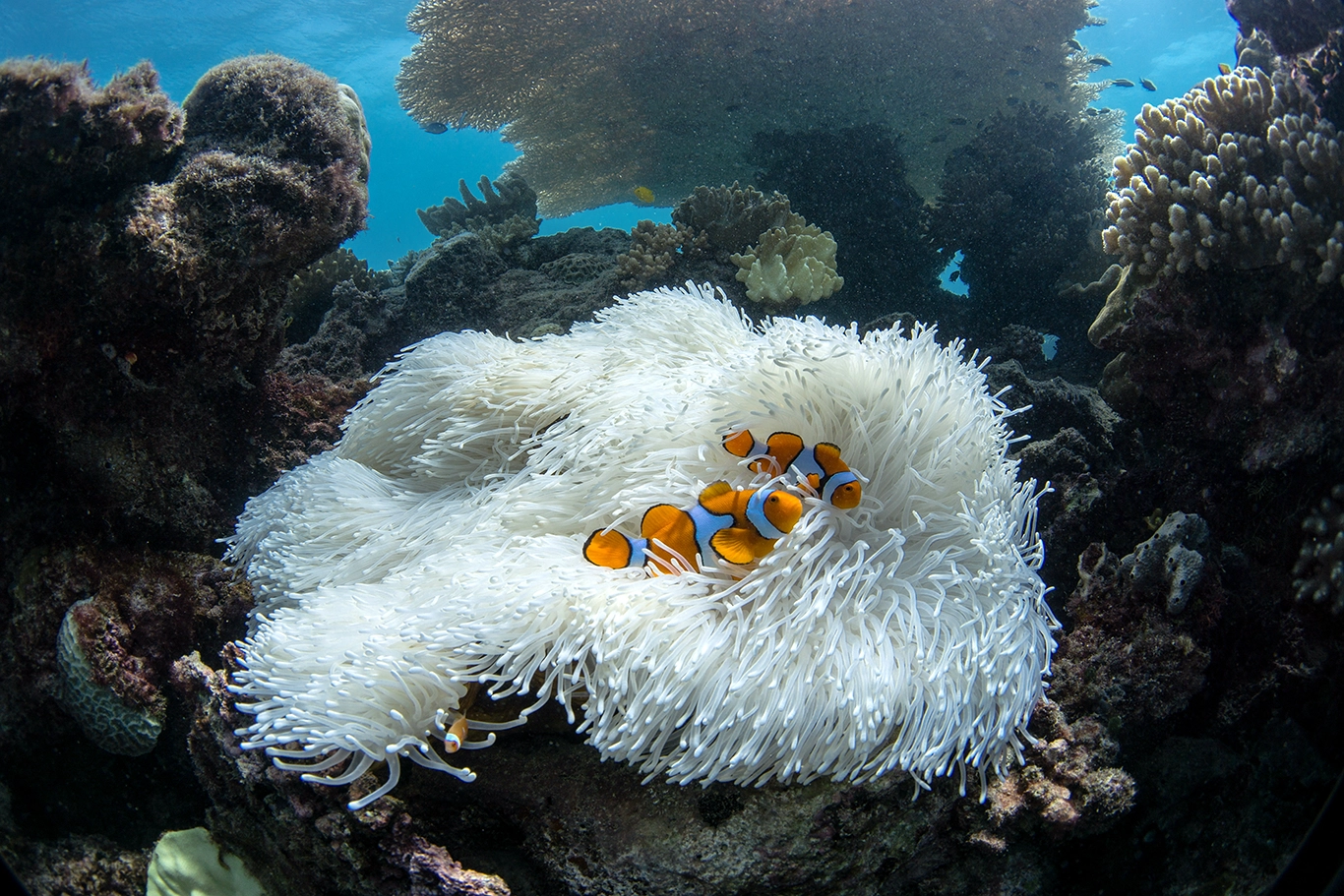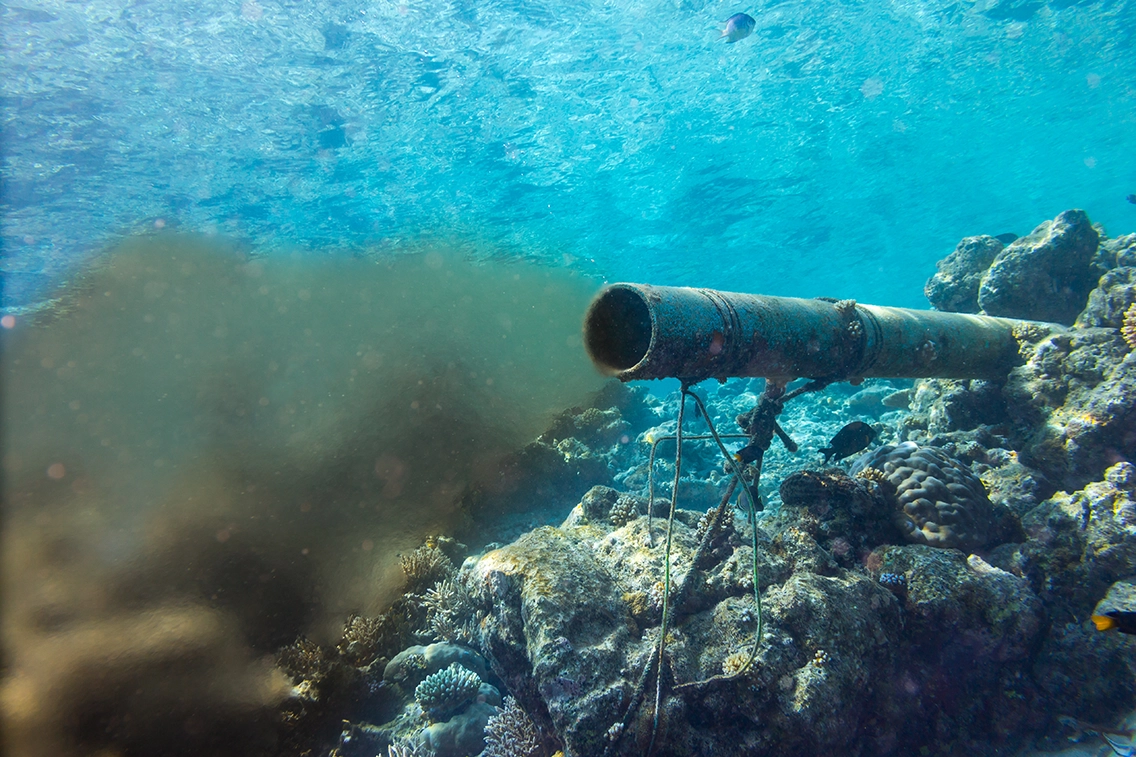- A Global Crisis: 80% of global sewage flows into the environment untreated, impacting coasts worldwide.
- Transboundary Threat: Sewage pollution crosses borders via rivers, harming oceans and creating dead zones.
- Massive Economic Cost: Sewage pollution carries an estimated annual global economic burden of over $4 trillion.
- Solvable Problem: Investing in treatment and infrastructure can restore ecosystems and build climate resilience.
In June, Ocean Sewage Alliance launched a campaign to bring a Global Sewage Treaty to the United Nations. Drawing on critical insights from our colleagues working on the plastics treaty negotiations, the BBNJ Agreement, also known as the High Seas Treaty, and other international policy initiatives, we have decided that now is the time for bold action on sewage and wastewater pollution. Our Global Sewage Treaty Campaign is the first of its kind to garner broad coalition support for addressing sewage and wastewater pollution on an international scale, demanding action in the form of a Global Treaty.
Led by Ocean Sewage Alliance (OSA), our coalition includes coral reef conservationists, public health practitioners, policy-makers, financiers, coastal communities, and anyone else who uses a toilet and believes that our sewage should not be dumped untreated into our ocean: it’s time for a sea change.
What is the problem?
Sewage pollution is ubiquitous, and it is a big, big problem. The global burden of sewage pollution is staggering. Some estimates indicate that 80 percent of sewage enters the environment untreated. This pollution is not limited to low-income countries; rich countries lack critical infrastructure to deal with sewage pollution as well. Some of the world’s most famous cities, such as Paris, New York, and San Francisco still discharge untreated sewage into local bodies of water. In short, it impacts everyone. With the global population nearing 8 billion people, that is a lot of sewage coming out of a lot of people. From New York, to Tijuana, to Lagos, to Sydney - we’ve got some serious sewage pollution problems.

Sewage pollution is a transboundary issue
Water knows no boundaries, neither does pollution. At the border between Mexico and the US, billions of gallons of untreated sewage are being discharged into the Pacific Ocean. Untreated sewage and wastewater from the Mississippi River flows into the Gulf of Mexico and to the Caribbean Sea, resulting in a deadzone (an area of water where marine life cannot survive) of over 4,000 square miles. This is not unique to these rivers and bodies of water. Using the source-to-sea framework, sewage travels downriver, contaminating bodies of water thousands of miles away, across borders, across countries, and ultimately across our ocean.
Sewage pollution is bad for the ocean
While many can identify plastic pollution on a beach or in the water, sewage pollution is often invisible to the untrained eye. Algal blooms, fish kills, dead reefs, dead zones, and foul smells are all products of sewage and wastewater pollution, but rarely garner much attention. Sewage brings plastics into our waters, exacerbates stress in marine ecosystems from climate change, and causes biodiversity loss. Along our coasts, sewage and wastewater pollution are often the dominant stressors in coastal ecosystems (Tuholske, 2021). Sewage contains a slew of nutrients, chemicals, pharmaceuticals, forever chemicals, heavy metals, and sediment that damage reefs, mangroves, seagrass beds and wetlands. Some estimates indicate that 58 percent of corals and 88 percent of seagrass beds are exposed to sewage pollution (Tuholske, 2021); another study looking specifically at coral reefs found sewage present in 92 percent of the reefs in the study (Wear, 2015).

Sewage pollution is costly
In 2025, OSA published The Scourge of Untreated Wastewater, an economic study detailing the cost to three sectors (fisheries, agriculture, and public health), and we found that the annual global burden of sewage and wastewater pollution is over 4 trillion dollars. This is money, put simply down the drain. Treated sewage and wastewater can be transformed into an incredible asset. It can provide potable water for irrigation, agriculture, drought resilience, and more.
Sewage pollution can be cleaned up
Despite all this, incredibly, data show that when sewage pollution is removed from our water, marine ecosystems heal and become more resilient to other stressors, like climate change. Wetlands and reefs regrow, fisheries rebound, and communities can access the incredible resources of our ocean. In short, taking action on sewage pollution presents an incredible opportunity for both effective action, scalable solutions, and ecosystem regeneration. We have case study after case study demonstrating that monitoring, regulation, and improved infrastructure effectively solve these problems with a ripple effect of benefits for human health, climate resilience, ocean ecosystem health, and biodiversity.

Why is a Global Treaty Necessary?
Sewage is often overlooked as an ocean threat, while plastics, climate change, and biodiversity loss often take center stage. According to data from Our Shared Seas, of the one billion in philanthropic dollars for ocean funding in 2022, less than 0.3 percent was earmarked for sewage and wastewater pollution compared to $238 million for climate (23 percent of total funding) and $34 million for pollution and other stressors (3 percent of total funding). Other treaties, such as BBNJ, the Paris Climate Agreement, and the ongoing plastics negotiations, do not address sewage and wastewater pollution.
We need a global framework and binding agreement for sewage and wastewater pollution with funding mechanisms to ensure action happens given the depth, breadth, and global impact of this pollution. An international treaty is the only tool that can bring the scale of attention necessary to take significant action to solve this global problem.

What are we hoping to accomplish?
A successful Global Sewage Treaty will have a profound impact on ocean and human health, establishing monitoring, regulation, improved treatment, and infrastructure, as well as financing. Our treaty campaign envisions a world with robust monitoring systems for sewage and wastewater pollution, where countries collaborate to develop scalable solutions to sewage pollution, utilizing state-of-the-art infrastructure and nature-based solutions, with plans for continued maintenance and monitoring. Similar to our colleagues working on the plastics negotiations, we envision that this treaty will enable country-level action plans tied to improvements in water quality, monitoring, regulation, and infrastructure while also meeting global standards set by the treaty.
Globally, this work calls for enhanced standards for sewage and wastewater pollution, ensuring that all sewage has some level of treatment before being discharged into the environment. As mentioned above, our global baseline is 80 percent of sewage entering the environment untreated, so global minimum standards for treatment would have a seismic impact.
Ultimately, we believe this treaty will introduce innovative financing mechanisms that enable countries to achieve their goals and improve infrastructure, monitoring, and regulation. This treaty should garner attention from large banks, conservation organizations, philanthropies, and other major financiers called to fund these solutions.
Next steps
This work requires global champions to amplify our messaging and secure multilateral support and global commitments. Our coalition will promote these key tenets, gain momentum in the coming year, and engage with UN member states and ministries to bring our treaty proposal to the UN stage for a vote. You can endorse our action pledge and join us as we take the next step toward a Global Sewage Treaty.


.jpg)


